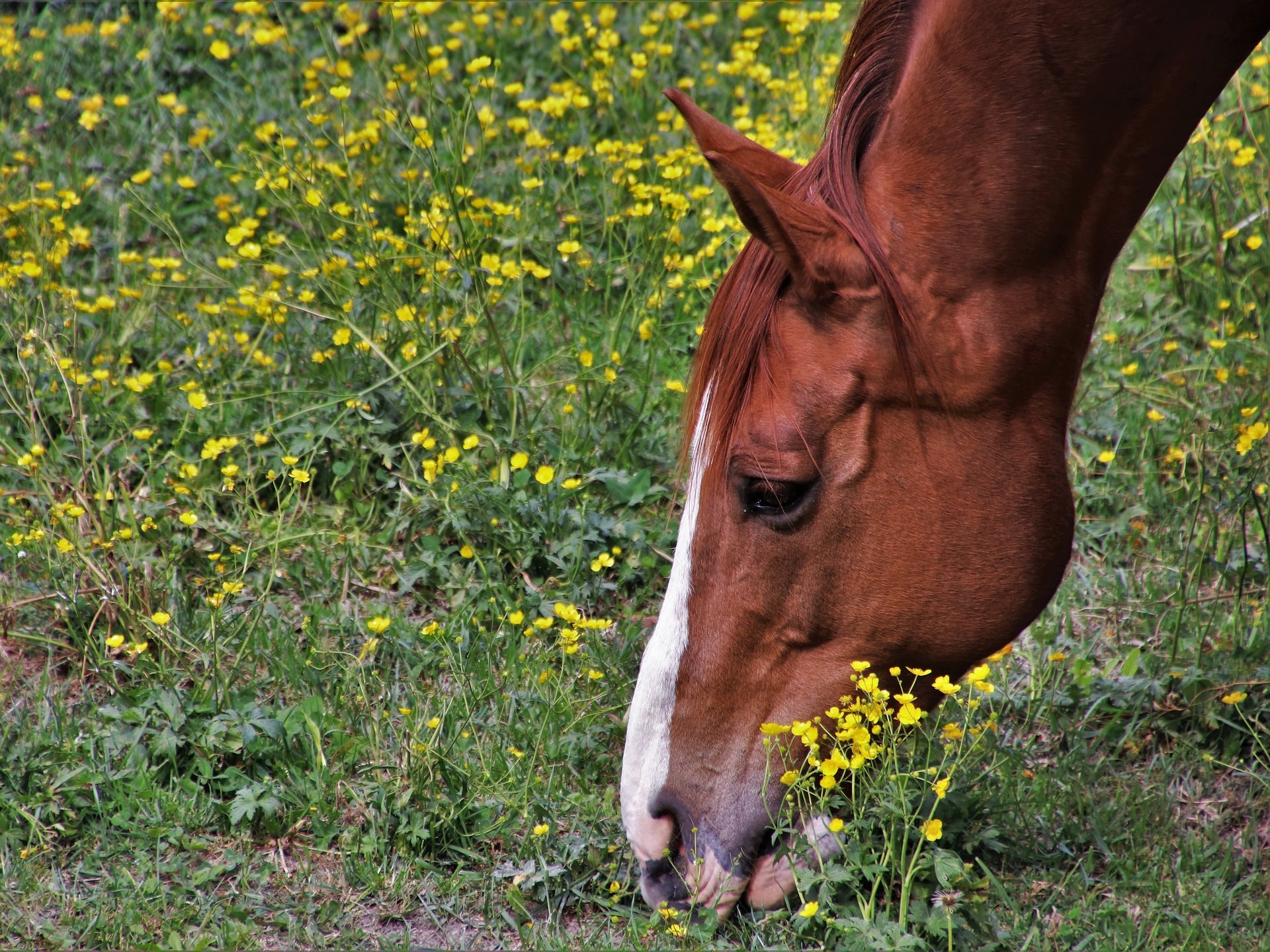Leaky Gut Syndrome: Implications of the Loss of Cell Barrier Function
What Is Leaky Gut Syndrome?
Leaky Gut Syndrome (LGS) has been examined and researched in humans, dogs and other animals for many years, including the horse. LGS involves inflammation of the gut lining; that is, the cell barrier between the gut lining and blood stream has been compromised.
Beneath the intestinal epithelial cells are enteric cells that provide a supporting, protective role to the epithelial cell barrier. Ideally, the space between this cell junction is tight. These intestinal cells are selective with the type and size of compounds that can pass through the cell barrier into the blood. Once that tight junction resistance is compromised, toxins and pathogens are able to leach into the blood. Inflammation caused by pathogens and stress, etc. can weaken the gut lining, resulting in LGS.
Symptoms of Leaky Gut Syndrome
Symptoms for horses associated with LGS include… change in behavior (i.e., irritability, dullness, girthy when saddled), diarrhea, fecal water, not performing at previous or expected level, weight loss, reoccurring colic, laminitis, insulin dysregulation, skin allergies, and persistent orts of daily feed. These symptoms may result in poor performance and behavior.
Causes of Leaky Gut Syndrome
Potential causes of LGS involve inflammation/infection from disease including pathogenic bacteria, internal parasites and toxins from molds; also suggested is chronic use of some medications (NSAIDS, anthelmintics, proton pump inhibitor, antibiotics). Common stressors that may contribute to LGS include heat stress, sudden weather changes, daily intense exercise, stressful training, injuries, trailering, disproportionate stall confinement), sudden hay changes, quantity/frequency of high starch feeds, and being paddocked/pastured with new group of horses.
Diagnosis of Leaky Gut Syndrome
LGS is often difficult to diagnose. More often than not, the process of determining a LGS diagnosis is eliminating known clinical causes to reach the default judgment of LGS. Clinical health problems that may contribute to LGS include Equine Metabolic Syndrome (EMS), insulin resistance (IR), laminitis, irritable bowel, celiac disease (human disease), colitis, dermatitis, and allergies. There is good evidence for the “cause” of these health conditions, that is, toxins and pathogens can penetrate the one-cell layer thick barrier between the gut lining and blood stream. Although diagnosis is not well established, the data and research are progressing.
Relevant Research
There is current research specifically with horses by Dr. Liara Gonzalez at North Carolina State University. According to Dr. Gonzalez, “This protective barrier is very sensitive to small changes from stress, colic, or disease.” She has also suggested “that early life stress—weaning, early separation, and nutritional deficiencies—correlates with a likelihood of intestinal inflammation later in life.”
There is also solid research regarding heat stress resulting in Leaky Gut Syndrome in food animals (dairy, swine) by Dr. Lance Baumgard at Iowa State University. “Feed restrictions, feed transitions, weaning, heat stress, intense exercise have been associated as causative factors with Leaky Gut Syndrome.”
A recent study, published as Technical Literature, conducted by Dr. Jessica Leatherwood at Texas A&M University looked at the effect of a registered protective strain of Bacillus subtilis (CLOSTAT) and registered protective product of butyric acid-Zn (ButiPEARL) on NSAID-induced gastrointestinal inflammation in horses. “Gastroscopy for stomach ulcers and circulating rDNA for bacterial abundance were measured prior to and during BUTE administration. BPZ EQ + CLOSTAT decreased squamous and glandular ulcers scores (during challenge) and 16s rDNA (prior to challenge) compared to the control and BUTE treatment groups.” These results indicate that the combination of the registered protective product butyric acid-Zn and registered protective strain of Bacillus subtilis can provide a protective effect to the intestinal barrier. (Note: To facilitate the diagnosis of infection from bacteria origin, 16s rDNA was used for detection.)
Nutritional Management for Leaky Gut Syndrome
1) Feed high fiber forages at recommended levels relative to body weight and production level.
-
- Avoid empty gut syndrome; that is, meal feeding with significant time gaps between meals; feed hay more frequently or feed via slow hay feeder.
- High-fiber diets increase bacteria’s butyrate production; butyric acid is a 4-carbon volatile fatty acid (VFA) and one of three primary VFAs produced in the gut by microbial digestion (fermentation). Butyric acid appears to be an energy source for the epithelial cells and thereby a readily available source of energy for the repair and growth of these intestinal epithelial cells and enteric
- The registered protective product of butyric acid-Zn is a combination of zinc and the four carbon VFA butyric acid. The company states that this product “strengthens the lining of the gut, leading to improved nutrient absorption and a stronger barrier against pathogens, parasites and toxins.”
2) Feed low starch/sugar balanced formulas to complement the forage portion of the diet.
3) Promote gut health via a stable microbial environment with soluble fibers, beet pulp and soy hulls.
-
- Integrity Lite and Integrity Adult/Senior are balanced formulas that contain high levels of beet pulp and soy hulls. The first two ingredients in these formulas are beet pulp and soy hulls. Intgerity also contains Bacillus subtilis (CLOSTAT) and butyric acid-Zn (ButiPEARL).
4) Feeding probiotics.
-
- The registered protective strain, Bacillus subtilis product is a product of the same company with butyric acid/Zn. Company states that the registered protective strain of Bacillus subtilis “…secretes an active substance which helps maintain the balance of microflora in the gut. When unbalanced, pathogens can multiply and damage the gut lining, results in Leaky Gut Syndrome (LGS).”
Gut health is fundamental for a healthy horse. A balanced diet, high in fiber, is important for gut health of the horse, thus important to immune health.

